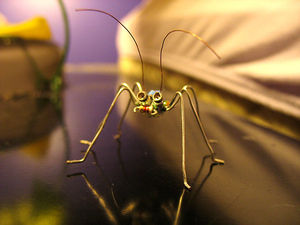Difference between revisions of "Electronics boot camp I: passive circuits and transfer functions"
From Course Wiki
| Line 4: | Line 4: | ||
__NOTOC__ | __NOTOC__ | ||
| − | + | {| | |
| − | + | | | |
<div> | <div> | ||
| + | <blockquote> | ||
'“It is exciting to discover electrons and figure out the equations that govern their movement; it is boring to use those principles to design electric can openers. From here on out, it's all can openers.” | '“It is exciting to discover electrons and figure out the equations that govern their movement; it is boring to use those principles to design electric can openers. From here on out, it's all can openers.” | ||
<blockquote> | <blockquote> | ||
''— Neal Stephenson, Cryptonomicon'' | ''— Neal Stephenson, Cryptonomicon'' | ||
</blockquote> | </blockquote> | ||
| − | |||
</blockquote> | </blockquote> | ||
| − | + | |[[File:Resistor Bug.jpg|right|300 px|thumb|Photo by Brendan Dolan-Gavitt]] | |
| − | + | |} | |
| − | + | ||
==Overview== | ==Overview== | ||
This assignment will introduce you to electronic circuits and the test equipment commonly used to measure voltage and current. If you need to review circuit concepts, start with the [[Electronics Primer]] page. | This assignment will introduce you to electronic circuits and the test equipment commonly used to measure voltage and current. If you need to review circuit concepts, start with the [[Electronics Primer]] page. | ||
Revision as of 23:06, 13 October 2018
|
Overview
This assignment will introduce you to electronic circuits and the test equipment commonly used to measure voltage and current. If you need to review circuit concepts, start with the Electronics Primer page.
This assignment has three parts:
- Part 1: A few questions to answer before you start your lab work.;
- Part 2: Get in the lab and start building and measuring basic circuits;
Submit your work on Stellar in a single PDF file with the naming convention <Lastname><Firstname>Assignment6.pdf.
| |
Here is a checklist of all things you have to turn in: (individually)
|
Back to 20.309 Main Page.

